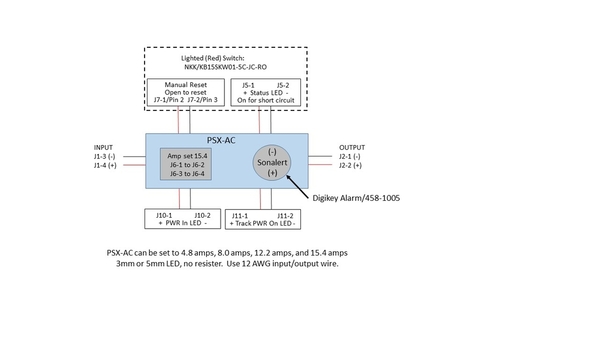Hello,
I'm trying to give as much info as possible,
I recently bought a 20-21151-1 NS Dash 9. I added it to the active list then ran it back and forth a few times on my inner loop of track and everything seemed fine. I've never had trouble with a new locomotive. I then added it to a lash-up with 2 locomotives I've been running for about a year with no problem. I started running the 3 locomotive lash up with 14 cars around my layout and about halfway around the locomotives started jerking then came to a stop. I walked over to see if somehow something had been on the track. I found nothing wrong but as I was walking back to where I set down my remote I smelled a burning electrical component smell. Looked down at my Z4000 and it had a steady red light. I immediately turned off the Z4000. I took off all locomotives except the new Dash 9 since it was the only change I've made to the layout and turned on the Z4000, raised my control handles to 22 volts. The Dash 9 moved about 10 feet with no problem, so I switched directions, again no problem, switched direction again and it stopped and there was an immediate solid red light on the Z4000. I immediately shut the Z4000 down. I believe the Dash 9 had some kind of internal short. I took the Dash 9 back and got a replacement. While all locomotives were off the track I turned on my Z4000 to check and make sure everything was ok. The solid red light came on. I immediately shut the Z4000 down. I disconnected all output wires on my TIU ( I use both fixed outputs and both variable outputs in the fixed position) and powered up the Z4000. Immediate red light again. I then unplugged all input wires on the TIU except Variable 2 the turned on the Z4000. No red light. Did the same thing on Fixed 2 and got the dreaded red light. So my TIU has at least one channel that is bad. I'm assuming( I know) that the defective locomotive caused the problem since I'd run trains the day before with no problems. I replaced the bad TIU with my spare, connected all input & output wires then cranked up the Z4000. No red light. Everything is as it should be.
Soooo.... After my short book I wrote, what can I do to protect my TIU from destruction in an instance like this? I'm hesitant to try my replacement Dash 9 without protection. Keep in mind I'm great with trestles, but I'm no electrical wizard.
Thanks, Don










